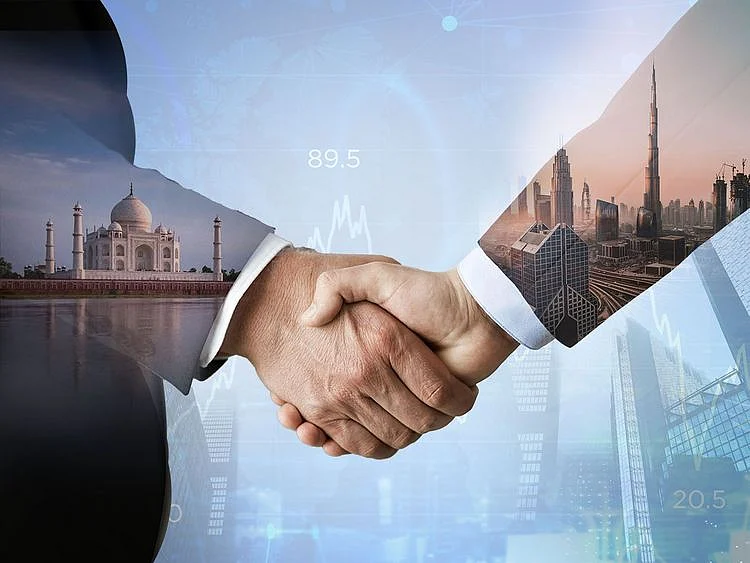India - Middle East- Europe Economic Corridor: A new global binding force
Submarine cables, green hydrogen, digital infrastructure key investment areas for industry

The idea of the India-Middle East-Europe Economic Corridor (IMEC) is grand — too grand to be attainable, sceptics may say, given the magnitude of investment, the complexity of geopolitics and geo-economics, and the technological challenges involved. Yet, it is realisable; indeed, it was realised millennia ago.
A recent bestseller, The Golden Road: How Ancient India Transformed the World, by William Dalrymple has highlighted “India’s often forgotten position as a crucial economic fulcrum… and as one of the main motors of global trade and cultural transmission in early world history.” In fact, the “Silk Route” barely existed, he wrote. Silk “arrived in Roman lands only indirectly, usually by boat, via India.”
Monsoon winds made the golden road possible. What happened millennia ago can certainly happen today, especially with infinitely superior technology, strong financial muscle, and institutional mechanisms.
So, IMEC was announced on September 9, 2023, during the G20 Summit in New Delhi as part of the Partnership for Global Infrastructure and Investment (PGII). Intending to bridge infrastructure gaps in developing countries, India, Saudi Arabia, the UAE, the EU, France, Germany, Italy, and the US signed an MoU. These countries, with a combined GDP of $47 trillion and a consumer base of 2.25 billion people, account for around one-fifth of total global trade.
Political backing
The project has garnered strong political backing, including from the G-7, which reaffirmed its commitment to IMEC at the 2024 summit.
IMEC is poised to deliver significant geostrategic and economic benefits. It will create faster, cheaper trade routes connecting India, the Middle East, and Europe, potentially reducing logistics cost by up to 30 per cent and cutting transportation time by around 40 per cent. IMEC will be beneficial for India, as about half of its total exports and almost four-fifths of exports to Europe pass through the Red Sea route.
The corridor comprises two primary routes: the eastern corridor connecting India to the Arabian Gulf; and the northern corridor that links the Gulf to Europe via a rail network, enhancing cross-border ship-to-rail transit.
Progress and collaboration
We see progress and the intent of the nations involved is clear. India and the UAE are collaborating on digital and financial frameworks, including linking their national payment systems. The India-UAE Virtual Trade Corridor will further facilitate trade by reducing transport costs and creating a robust digital logistics interface. India’s RITES is leading the development of this digital connectivity project; the MAITRI platform intends to unify Indian trade portals for smoother integration with UAE systems.
During Indian commerce and industry minister Piyush Goyal’s visit to Italy this year, IMEC was an area of emphasis during discussions. Italy is likely to co-host a meeting of IMEC Foreign Ministers later this year.
Saudi Arabia has committed $20 billion to support the project, while India is also planning an undersea power transmission line to Saudi Arabia and the UAE. European interest is also growing, with companies like Maersk, Siemens Mobility etc. actively exploring opportunities along the corridor.
IMEC presents various offerings to all the parties concerned. Strategically, it can become central to Europe’s and the US’s de-risking efforts to reduce dependency on China, particularly in critical minerals and manufacturing. Germany’s 2023 China Strategy and France’s Indo-Pacific Strategy (2018) underline this shift. IMEC also allows India to position itself as a competitive manufacturing hub within global supply chains while boosting investment flows among member countries.
Energy security
Energy security is another key driver. IMEC could significantly enhance energy trade between the Gulf and Europe. For India, the corridor promises more reliable oil and gas supplies from the Gulf and aligns with clean energy ambitions. Existing projects like the EastMed-Poseidon pipeline could integrate with IMEC’s infrastructure.
Another opportunity lies in the creation of hydrogen corridors, linking green hydrogen producers in India and the Gulf to European markets. Italy’s ongoing hydrogen partnership with Austria and Germany within the EU could eventually connect to IMEC’s hydrogen network. Digital connectivity is also important, with IMEC offering a chance to develop an alternate global fibre-optic cable infrastructure and enable secure, efficient data flow across borders.
However, there are also concerns like geopolitical instability in West Asia threatens the corridor’s viability. Security concerns were highlighted in June 2025 when Haifa Port was struck by Iranian air strikes, though there was no damage reported.
Infrastructure funding poses another challenge. The corridor requires an estimated $600 billion. Mobilising funds from multilateral banks, sovereign wealth funds, and the private sector is essential.
In fact, a recent interaction hosted by FICCI in New Delhi on IMEC saw wide interest among Indian industry stakeholders, highlighting the corridor’s vast potential. Sectors such as submarine cables, green hydrogen, biofuels and digital infrastructure emerged as key areas of engagement and industry players will have to play an important role in each of these segments.
We are hopeful that the authorities will work together to provide a clear governing mechanism to transition IMEC from a strategic vision to actual implementation and developments related to IMEC will be closely followed.
Jyoti Vij is Director General, Federation of Indian Chambers of Commerce and Industry (FICCI)
Network Links
GN StoreDownload our app
© Al Nisr Publishing LLC 2026. All rights reserved.